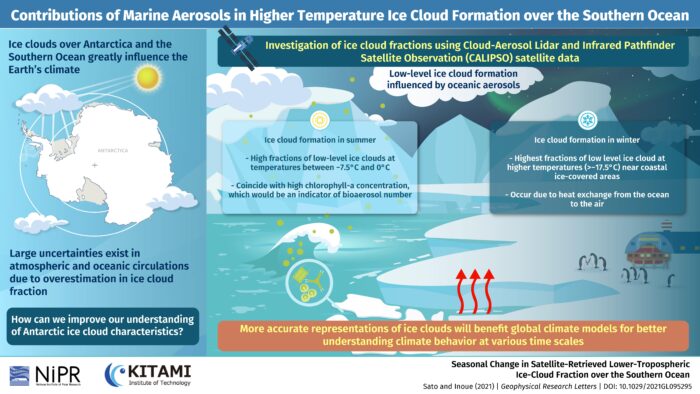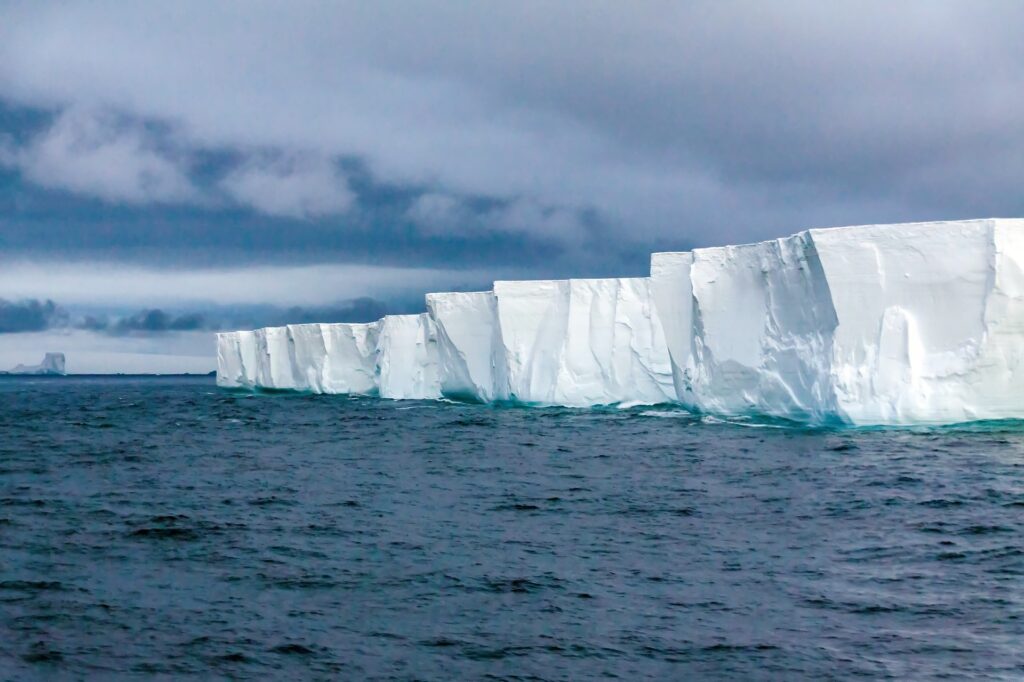Climate scientists from Japan have uncovered how marine aerosols contribute to ice cloud formation over the Southern Ocean during the summer months, when temperatures are comparatively high.
Kazutoshi Sato, assistant professor from Kitami Institute of Technology, and Jun Inoue, associate professor from the National Institute of Polar Research, used data captured by the NASA/CNES joint-venture Cloud-Aerosol Lidar and Infrared Pathfinder Satellite Observation (CALIPSO) satellite to estimate the seasonal variation in the ice cloud fraction over Antarctica and the Southern Ocean. They also investigated the relationship between low-level ice clouds and sea surface conditions in summer and winter.
According to the research team, simulating the behavior of polar cloud cover in climate models is highly complex. Breaking waves and squally winds disperse aerosols – tiny particles suspended in the air upon which water vapor condenses at high altitudes – from the sea into the atmosphere. These particles then become the starting particles for a type of cloud called ice clouds and are hence called ice-nucleating particles (INPs). As the ice cover on the polar sea surface changes with temperature, the concentration and activity of INPs changes too, thereby influencing cloud formation. Understanding the contributions of such aerosols to ice cloud formation would help improve the accuracy of future climate models.
Dr Sato said, “Ice clouds are normally formed under very cold conditions (below -38°C), but we observed the formation of low-level (under 6,500ft) ice clouds at significantly higher temperatures.”

As marine phytoplankton blooms are considered a source of bioaerosols, the scientists also used the satellite data to measure the concentration of chlorophyll on the sea surface to provide an indicator of phytoplankton abundance in the upper layers of the ocean. Finally, they reanalyzed the existing data to understand the extent of gas and particle exchange between the ocean and atmosphere.
They found that there was a sizeable difference in ice cloud formation at the low- and mid-levels (6,500–20,000ft) between summertime and winter. High fractions of low-level ice clouds were observed at comparatively high temperatures (above -7.5°C) over coastal Antarctic Sea ice areas in the summer. This increased ice cloud cover coincided with the highest estimated populations of phytoplankton. In winter, low-level ice clouds were observed at temperatures above -17.5°C, a time during which substantial heat exchange took place from the ocean to the air near coastal areas.
Professor Sato said, “Our findings suggest that marine aerosols emitted from the ocean contribute to low-level ice-cloud formation over the Southern Ocean even under higher temperatures.
“Developing reliable global climate models are essential to improving our understanding and predictions of climate behavior. By clarifying the relationship between ice clouds and marine aerosols, our study will help reduce the errors associated with cloud biases in a numerical climate model.”
The complete findings from the research have been published in the journal Geophysical Research Letters.



